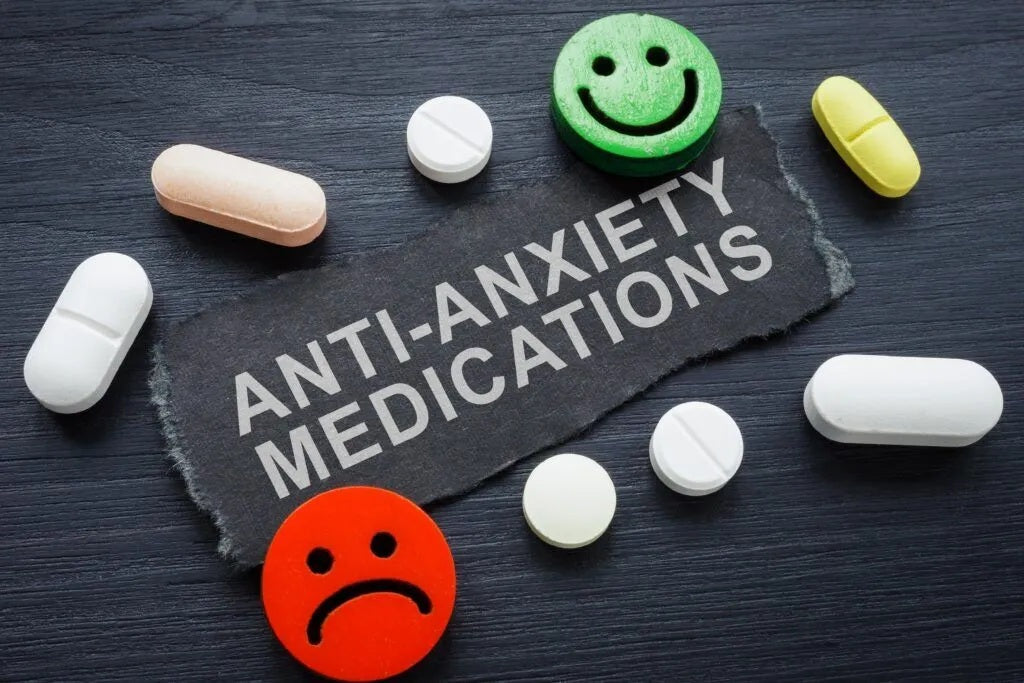Alprazolam (Xanax) – Uses, Side Effects, and Warnings [2025 Guide]
Alprazolam, commonly known by its brand name Xanax, is a prescription medication used to treat anxiety disorders, panic attacks, and sometimes short-term stress relief. It belongs to a class of drugs called benzodiazepines, which work by calming the central nervous system.
🔹 What Is Alprazolam Used For?
Alprazolam is primarily prescribed for:
-
Generalized anxiety disorder (GAD)
-
Panic disorder
-
Short-term anxiety related to stress
It helps by increasing the calming effects of a natural chemical in the brain (GABA), promoting relaxation and reducing nervous tension.
💊 How to Take Alprazolam
-
Take by mouth, exactly as directed by your healthcare provider.
-
Do not take more than prescribed — misuse can lead to dependence.
-
Alprazolam is typically used for short-term relief.
-
Older adults may require a lower dose due to increased sensitivity.
-
Always read the Medication Guide (Med Guide) that comes with each prescription.
⚠️ Side Effects of Alprazolam
Serious side effects (Seek immediate medical help):
-
Allergic reaction: rash, swelling, difficulty breathing
-
Extreme drowsiness or trouble staying awake
-
Breathing problems, especially when combined with other medications
-
Mood changes, depression, or suicidal thoughts
Common side effects (Mild and temporary):
-
Dizziness or lightheadedness
-
Drowsiness
-
Reduced coordination
-
Decreased sex drive
🚫 What Not to Take with Alprazolam
Some medications and substances can dangerously interact with alprazolam. Avoid these:
High-risk interactions:
-
Grapefruit or grapefruit juice
-
Clarithromycin
-
Ketoconazole, itraconazole, voriconazole
-
HIV and Hepatitis antivirals
-
Certain cancer medications (e.g., ribociclib)
-
Mifepristone
-
Sodium oxybate
Use with caution:
-
Alcohol
-
Opioid painkillers (e.g., morphine, codeine)
-
Sleep aids (e.g., zolpidem)
-
Muscle relaxers
-
Antidepressants (e.g., trazodone, amitriptyline)
-
Seizure medications
-
Herbal supplements like St. John’s Wort, valerian root, or melatonin
🔍 Important 2025 Update on Benzodiazepines
In recent years, including 2025, health professionals have become more cautious about prescribing benzodiazepines like alprazolam. Long-term use is linked to:
-
Tolerance and dependence
-
Memory problems
-
Withdrawal symptoms after stopping
Non-drug therapies like CBT (Cognitive Behavioral Therapy) are increasingly recommended as first-line treatments for anxiety.
📝 Final Thoughts
Alprazolam can be very effective for managing anxiety if used correctly and under close medical supervision. However, it’s essential to follow the prescribed dosage and stay informed about possible interactions and long-term effects.
If you're taking alprazolam or considering it, always consult your healthcare provider — especially if you are on other medications or supplements.
- Risk of dependence: Xanax can cause physical and emotional dependence, even when taken as prescribed. Physical dependence means your body adapts to the medication and needs it to function normally.
- Withdrawal symptoms: Suddenly stopping Xanax can lead to uncomfortable and potentially dangerous withdrawal symptoms. These can include increased anxiety, insomnia, tremors, and in severe cases, seizures. Some people may experience a protracted withdrawal syndrome with symptoms lasting for weeks or even longer. It is absolutely vital to never stop taking Xanax abruptly without consulting your doctor.
- Alcohol and opioids: Combining Xanax with alcohol or opioid medications is extremely dangerous and can lead to severe sedation, dangerously slowed breathing, coma, and even death.
- Other medications: Xanax can also interact with other medications, including certain antidepressants, antifungals, and more. Always discuss all medications and supplements you're taking with your doctor or pharmacist to avoid potential drug interactions.
- Grapefruit products: Consuming grapefruit or grapefruit juice while taking Xanax may increase the drug's levels in your blood, potentially increasing side effects.
- Elderly individuals: Older adults metabolize Xanax more slowly and may be more susceptible to side effects like drowsiness and cognitive problems. Lower doses are generally recommended for this group.
- Pregnancy and breastfeeding: Xanax can potentially harm a developing fetus and can pass into breast milk. If you are pregnant, planning to become pregnant, or breastfeeding, discuss the risks and benefits of Xanax with your healthcare provider.
- Medical supervision: Only take Xanax under the close supervision of a qualified healthcare professional. Follow the prescribed dosage and schedule carefully.
- Alternatives: Xanax is often one part of a larger treatment plan that may include therapy (like Cognitive Behavioral Therapy) and/or other medications that are better suited for long-term anxiety management, like SSRIs (selective serotonin reuptake inhibitors).

